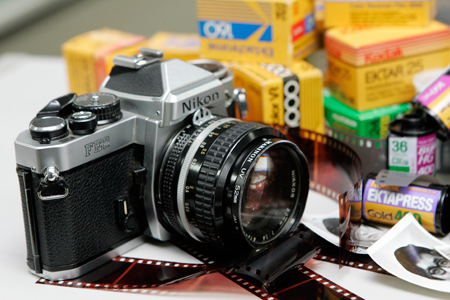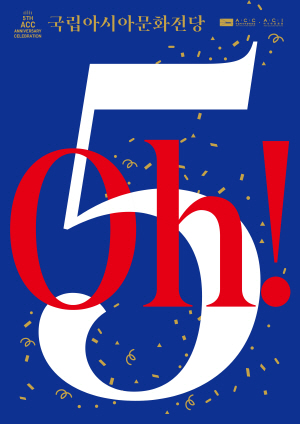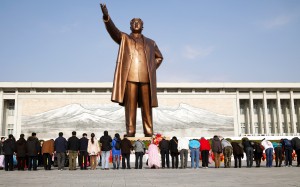Nostalgia for sights and sounds of the ’90s

A film camera is one of the items that has been superseded by digital devices. / Korea Times photo by Shim Hyun-chul
In the early 90s, before the days of iPhones, rapper Psy and even the Internet, people still used evolving hi-tech communication, and were often star-struck by celebrities and, of course, had fun. To younger people, perhaps the famous figures and fashions of that time seem dowdy and find it hard to imagine how people dealt with daily issues without the aid of instant communication to their friends through smart phones.
However, perhaps things were simpler and therefore less complicated in the era when people were content to watch humble color TVs instead of wall-mounted screens with ultra-high-definition and surround sound.
“One of the things I no longer see these days are film cameras, and that’s what I miss the most about the 1990s. It was the memory record for my two sons who spent their childhood in the ‘90s. Thanks to my camera, which is over 15 years old now, I was able to preserve our best memories in pictures,” 52-year-old Kim Kyung-nam said. “Things have changed a lot over the past 15 years and most people nowadays use digital cameras. The sad part is that people don’t have prints of their pictures any more. They just upload a few shots which look pretty online and delete the rest.”
Kim noted that she felt sad when she found out her old camera cannot be fixed because the components of the model are no longer available.
 “Back then, every shot counted. First of all, you could barely see how your subject looked on dark film. Besides, film itself was expensive. I remember it was around 2,500 won for 24 shots. So, we got a lot of fun but natural pictures,” Kim said. “Maybe I also miss all the old stuff in the world now that new things come out every day.”
“Back then, every shot counted. First of all, you could barely see how your subject looked on dark film. Besides, film itself was expensive. I remember it was around 2,500 won for 24 shots. So, we got a lot of fun but natural pictures,” Kim said. “Maybe I also miss all the old stuff in the world now that new things come out every day.”
Apparently, the invention of the Internet has changed many parts of people’s lives. It not only changed the way people communicate but also how they have fun. This is how kids in the ‘90s used to play.
“Playing tag and hide-and-seek was the biggest entertainment when I was a child back in the ‘90s. Peers just gathered in the playground where we had tons of fun running around the place, which is a very different picture from kids nowadays where they are more used to playing smart phone games,” said Jung Seung-hoon, a 22-year-old college student. “Playing marbles was another good game that kids were crazy about. Five or six hours vanished in a flash and many kids, including myself, ended up being scolded by mothers. Of course, there were many scars from falls and fights among friends, but we learned how to get along with one another from such experiences.”
Jung said the best part is that those past-times and games require nothing but people. “It’s kind of sad that they are disappearing. Someday we might have to explain what they are to kids,” he said.
In the ‘90s, people waiting in long lines at pay phones to call the business colleagues who beeped them was a common sight on weekends in crowded districts such as Sinchon.
The beeper, or pager, was widely used in Korea at the time, with some 15 million users across the nation in 1997. Through these devices, one could beep telephone numbers which receivers could then call back. Although messages could not be communicated in words, simple communications from numbers were popularly used. Leaving voice messages was another option.
Park Hee-jung, a 34-year-old office worker remembers the first time she used the gadget; during her senior year in high school and during college.
“I would save voice messages left by the guy I had a crush on, and listen to them over and over again,” she said with a laugh.
Park also remembers that at the time, her teachers at her high school would say, “When we wanted to meet up with someone when we were young, we would just have to go to the place where we had agreed to meet, and wait until the other person showed up. You guys are living in a very convenient world.”
Another popular gadget around that time was the portable cassette player, also referred to in Korean as “Mymy” which was the name of a model LG had created.
 Kim Ji-won, a 27-year-old university student, looks back on the days when he listened to music on his cassette player during every minute of his spare time.
Kim Ji-won, a 27-year-old university student, looks back on the days when he listened to music on his cassette player during every minute of his spare time.
“When I was in middle school, my dad’s friend bought me a Sony Walkman from Japan. It was the newest model at the time, and the special thing about it was that the earphones fitted into the gadget like the cable of a vaccum cleaner,” he said. “Everyone in my class wanted to listen to music with it, and it soon stopped working.”
Kim said owning a cassette player was best when the students went on a field trip or retreat. “It was great listening to songs on long bus rides,” he recollected.
Kim, who particularly liked to listen to music, had 40 to 50 cassette tapes in his collection. Although he mostly listened to Korean pop songs, his favorite was the soundtrack from the film Titanic. He especially liked Celine Dion’s hit song “My Heart Will Go On” and he played the tape on his cassette player so many times that it very soon became warped. Another favorite was rock star Kim Jang-hoon’s fifth album.
Nowadays countless albums fit onto mp3 players and cellphones, but at that time, Kim also recalls having carried around several cassette tapes, to be able to listen to a variety of songs.
And these remain fond memories for Kim, who now uses his iPhone to listen to music.
Fandom ― part of teen-culture
With the popularity of such portable music gadgets, many idol singer groups sprang up and some of them became crazily popular.
H.O.T. and Sechs Kies were the first generation of idol groups in Korea. As a matter of fact, there were not many identifiable phenomena that could be considered “’90s teen-culture” before then, but shortly after these idol groups appeared, becoming a fan of one established a person as an integral part of teen-culture.
H.O.T. was made of five good-looking and talented teenage boys who danced strenuously and wore fancy stage costumes. Teenagers chased after everything about the five boys including their fashion, hair style and even their style of speaking.
Their colorful costumes and items such as fur gloves, hats and brooches, which they wore when performing their biggest hit song “Candy” gained tremendous popularity among men and women of all ages. Almost every kid and teenagers bought one or two of these items to wear.
“I vividly remember that I was one of those who collected copies of every item the five members wore according to the color. In addition to collecting fashion items related to them, my friends and I were big fans of them collected everything about them such as their photos, articles in newspapers and even recorded every TV program they appeared in on videotape,” says Shin Jung-eun, a 27-year-old web designer.
“When my friends and I were not satisfied with the videotapes any more, we went to see them not only at their concert but also the accommodations where they stayed together. We often stayed all night in all weather in front of their house just to see them step into the house,” says Shin showing how much she was passionate for the five boys.
Soon after H.O.T. became popular, another counterpart idol group named Sechs Kies showed up to make a two horse race.
The two teams were competitors and naturally, their fans became competitors as well.
The competition became confrontational from time to time.
“While the two groups were active in the idol singer world and secured their place as the two top idol group, fans became more passionate. I didn’t even talk to some classmates who were fans of Sechs Kies because I was a H.O.T. fan at that time,” says Park Ah-reum, a-26-year old office worker living in Seoul.
“Looking back on it now, that was quite funny behavior, but I don’t feel ashamed about it at all. It is one of my delightful memories of childhood and I will never feel that sort of tribal spirit ever again in my life,” said Park, laughing at the memory. <The Korea Times/Jung Min-ho, Kim Bo-eun, Bahk Eun-ji>


























































